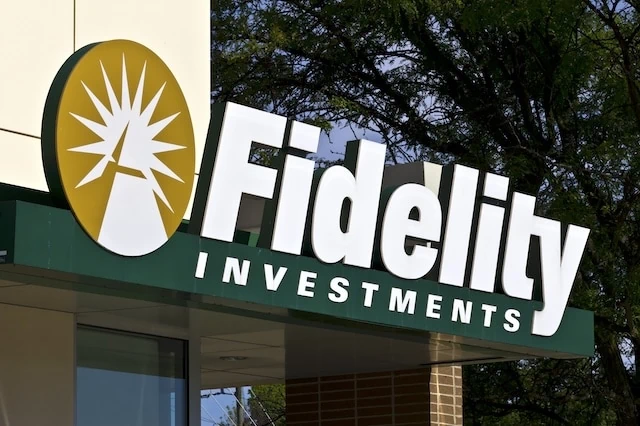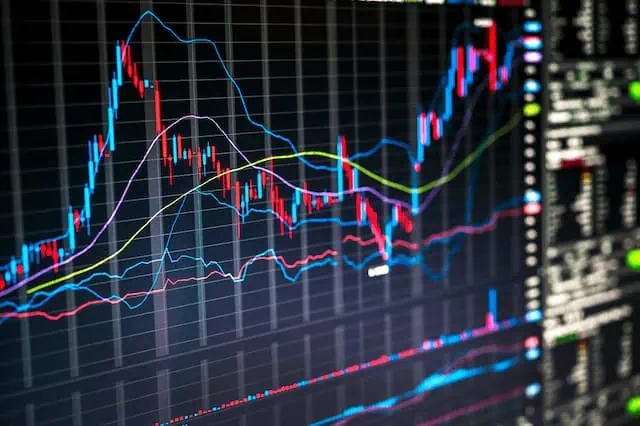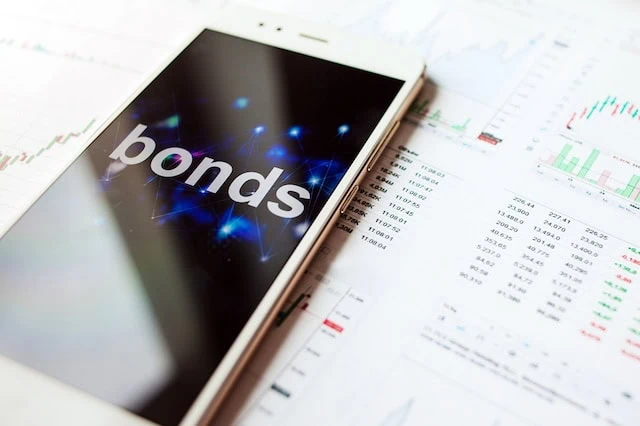While tens of millions of Americans invest with Fidelity, you don’t necessarily need a Fidelity account to yoke your retirement portfolio to this famed investment titan.
All you need are a handful of Fidelity’s best mutual funds, which for more than seven decades have built a reputation on sterling human management and, in more recent years, some smart, cost-efficient index products too.
One of the only real problems with Fidelity’s fund lineup is its size. At more than 200 products, you could get lost in the weeds for days trying to sort out which of its mutual funds stand out from the rest. The job is made all the more difficult when you realize Fidelity has numerous share classes, making it even more difficult to determine which funds you actually have access to.
Today, I’m going to make it simple. Read along with me as I cover some of Fidelity’s best mutual funds to buy—a collection of products that showcase both Fidelity’s track record as a haven for smart stock and bond pickers, as well as its ability to provide superior index funds with thin fees. Importantly: All of the Fidelity funds on this list are Investor-class shares available to average Joes and Janes, and with no investment minimums to boot.
Disclaimer: This article does not constitute individualized investment advice. These securities appear for your consideration and not as personalized investment recommendations. Act at your own discretion.
Featured Financial Products
Why Fidelity Mutual Funds?

Fidelity is a leader in mutual funds (and ETFs, for that matter) and has been a force in the industry since the launch of its Fidelity Puritan Fund (FPURX) back in 1947.
Today, this premier mutual fund company has more than $12.4 trillion in assets under administration thanks in large part to the success of its talented fund managers. Most notably, that includes Peter Lynch, the longtime manager of the Fidelity Magellan Fund (FMAGX) who averaged an incredible 29.2% per year between 1977 and 1990.
However, while Fidelity first built its name on actively managed funds, over the past three decades, the firm has built out its low-cost and even no-cost index funds as part of the movement to reduce expense ratios and transaction costs for individual investors.
The end result is a fund lineup that can serve just about every need, and that’s typically competitive on price.
How Were the Best Fidelity Mutual Funds Selected?

Fidelity offers up quite the collection of mutual funds—in the hundreds, in fact, making it easy to succumb to analysis paralysis.
To whittle my way down to a more manageable list of the truly best Fidelity mutual funds, I’ve started with a quality screen, including only Fidelity mutual funds that have earned a Gold Morningstar Medalist rating.
Unlike Morningstar’s Star ratings, which are based upon past performance, Morningstar Medalist ratings are a forward-looking analytical view of a fund. Per Morningstar:
“For actively managed funds, the top three ratings of Gold, Silver, and Bronze all indicate that our analysts expect the rated investment vehicle to produce positive alpha relative to its Morningstar Category index over the long term, meaning a period of at least five years. For passive strategies, the same ratings indicate that we expect the fund to deliver alpha relative to its Morningstar Category index that is above the lesser of the category median or zero over the long term.”
As I’ve written in other WealthUp articles, a Medalist rating doesn’t mean Morningstar is necessarily bullish on the underlying asset class or categorization. It’s merely an expression of confidence in the fund compared to its peers.
Fidelity actually has dozens of Gold-rated funds, but several of them are specific share classes that are only available to certain subsets of investors—those enrolled in Fidelity Wealth Services, for instance, or those enrolled in eligible employer-sponsored retirement plans. So I’ve further narrowed the list to only Investor-class funds. Importantly, these funds typically offer no investment minimums, meaning you can get started for as little as one dollar.
From the remaining universe of funds, I selected a range of both indexed and actively managed mutual funds displaying the best Fidelity has to offer. This list includes both core portfolio holdings, as well as satellite products you can use to try to generate alpha.
The Best Fidelity Mutual Funds to Buy

As mentioned before, Fidelity boasts some of the fund industry’s top managers. So while this list of Fidelity’s best mutual funds includes a few dirt-cheap index funds, I’ve highlighted several actively managed products—both core and satellite holdings alike—that demonstrate the firm’s ability to identify the market’s best opportunities.
Also, every fund highlighted on this list boasts annual expenses that are at least below their category average. So while Fidelity’s actively managed funds might be more expensive than your average index fund, you’re still getting good relative value. (That said, if you have access to more inexpensive share classes via your wealth manager, retirement plan, or elsewhere, use those instead!)
One last reminder: Each fund on this list has no investment minimums. So you can get started with as little or as much capital as you’d like.
1. Fidelity 500 Index Fund

- Style: U.S. large-cap stock
- Assets under management: $631.6 billion
- Dividend yield: 1.2%
- Expense ratio: 0.015%, or 15¢ per year for every $1,000 invested
If a major mutual fund provider’s lineup includes a cheap S&P 500 index fund, chances are it’ll be one of their best-rated funds, and that’s the case here with Fidelity 500 Index Fund (FXAIX).
The logic goes like this: The S&P 500 Index is commonly used as a performance benchmark for mutual funds that invest in U.S.-based large-cap stocks. But the majority of fund managers who run these funds typically struggle to beat their benchmark. According to S&P Dow Jones Indices, “60% of all active large-cap U.S. equity funds underperformed the S&P 500.” That’s no anomaly: Thanks to yet another 365 days of lagging in 2023, the majority of active managers have now failed to beat the S&P 500 in 21 of the past 24 years.
So, as I typically say when confronted with an S&P 500 fund: If you can’t beat it, join it.
Fidelity 500 Index Fund tracks the S&P 500—a collection of some of the largest American companies, but to clarify, not the 500 largest American companies. To be included in this index, a company must have a market capitalization of at least $18.0 billion, its shares must be highly liquid (shares are frequently bought and sold), and at least 50% of its outstanding shares must be available for public trading, among other criteria. A company must also have positive earnings in the most recent quarter, and the sum of its previous four quarters must be positive—two traits that weed out at least a few massive firms that would otherwise be included.
Note: Once a company becomes an S&P 500 component, it’s not automatically kicked out if it fails to meet all of the criteria. However, the selection committee would take this under consideration and possibly boot the company.
People like to consider the S&P 500 a reflection of the U.S. economy. But it’s hardly a perfect representation. For instance, the technology sector accounts for nearly 30% of FXAIX’s assets. Real estate, materials, and utilities merit less than 3% apiece. This is in no small part because, like many indexes, the S&P 500 is market capitalization-weighted, which means the greater the size of the company, the more “weight” it’s given in the index. Currently, trillion-dollar-plus companies Microsoft (MSFT), Apple (AAPL), and Nvidia (NVDA) sit atop Fidelity 500 Index Fund’s holdings list.
Turnover, which is how much the fund tends to buy and sell holdings, is always low, given that only a handful of stocks enter or leave the index in any given year. This tamps down (and often eliminates) capital-gains distributions, which receive unfavorable tax treatment. This makes FXAIX an extremely tax-efficient option for taxable brokerage accounts.
It’s this combination of traits—the S&P 500’s excellent as an index, bare-bones costs, and tax efficiency—that earn this Fidelity index fund a Gold Medalist rating from Morningstar. That makes FXAIX one of the best Fidelity mutual funds to buy, especially if you’re building the core of your portfolio.
Want to learn more about FXAIX? Check out the Fidelity provider site.
Related: 9 Monthly Dividend Stocks for Frequent, Regular Income
2. Fidelity Founders Fund

- Style: U.S. large-cap growth stock
- Assets under management: $180.9 million
- Dividend yield: 0.1%
- Expense ratio: 0.68%, or $6.80 per year for every $1,000 invested
The Fidelity Founders Fund (FIFNX) is a pretty uniquely situated fund that invests in “founder-involved companies.” Effectively, for a stock to enter the portfolio, at the time of purchase, its founder must be a member of senior management, the board of directors, or both. (FIFNX’s literature also notes it “takes into consideration a founder’s personal or family share ownership in the company.”)
So … why the focus on founders? Among other reasons, you could argue that founder-led firms share a trait with companies that have high insider ownership—alignment with shareholders’ best interests. Founders often have meaningful “skin in the game,” meaning that they too have a financial stake in the firm’s success. You can also argue that founders often hold a longer-term view of their company compared to outsiders more familiar with management than the company’s actual offerings. And founder-led companies simply tend to be younger, for obvious reasons. (If you find a century-old company with its original CEO, break out the silver and garlic.)
Despite the fact that the fund description insists FIFNX invests in either growth stocks or value stocks (or both), manager Daniel Kelley’s 130-plus portfolio holdings have a decided growth bent. The top sector by a mile is information technology; tech stocks soak up roughly a third of all assets. Throw in another 14% in communication services companies like Meta Platforms (META) and Alphabet (GOOGL), as well as a top-10 allocation to consumer discretionary play Amazon (AMZN), and already you’ve got half of assets invested in technology and “tech-esque” firms.
Also, while it’s categorized as a U.S.-focused fund, Fidelity Founders is happy to invest around the world. International stocks, including Argentine IT company Globant (GLOB) and Italian luxury mainstay Prada, make up a little more than 10% of the portfolio.
Fidelity itself warns that “simply because a company is run by its founder does not necessarily mean its management is superior relative to other professional leaders, or that the company will outperform its non-founder-run peers.” But in its relatively short history (FIFNX came to life in 2019), the fund has been solidly above the category average.
Want to learn more about FIFNX? Check out the Fidelity provider site.
Related: 9 Best Fidelity Index Funds to Buy
Featured Financial Products
3. Fidelity Growth Strategies Fund

- Style: U.S. mid-cap growth stock
- Assets under management: $3.8 billion
- Dividend yield: <0.1%
- Expense ratio: 0.75%, or $7.50 per year for every $1,000 invested
Mid-cap stocks (typically companies worth $2 billion to $10 billion by market cap) are frequently referred to as the market’s “Goldilocks” stocks.
That’s because they enjoy some qualities of large-cap firms (scale, more diverse revenue streams, good access to capital) while also demonstrating some of the best traits of smaller companies (they’re nimble and often have more substantial upside potential). As a result, they’re “just right.”
Investment company Hennessy Funds, in a study of mid-caps, says: “In any given 1-year rolling period since 2003, small-, mid-, and large-cap stocks have outperformed 33%, 26%, and 41% of the time. However, the longer mid-cap stocks are held, the more often they outperformed. In fact, 60% of the time, mid-caps outperformed small- and large-cap stocks over any 10-year rolling period in the past 20 years.”
Better still? During the 20-year period (through 9/30/23) that Hennessy studied, they found that while mid-caps delivered higher risk than large-caps, they delivered better returns … and they generated both lower risk and higher returns than small caps.
That brings me to Fidelity Growth Strategies Fund (FDEGX), a predominantly mid-cap fund with an emphasis on “accelerated earnings or revenue growth.”
While the fund is supposed to invest primarily in mid-caps, manager Jean Park can also go large or small with some of the portfolio, and currently, she leans entirely toward the former. Roughly three-fourths of the portfolio is invested in mids, while the rest of assets are tied up in smaller large caps.
A big difference between this and, say, a mid-cap growth index fund is portfolio size. Rather than holdings in the several hundreds, FDEGX has about 110 holdings as of now. I mention this to point out that, as a result, top holdings—currently including Apollo Global Management (APO) and WW Grainger (GWW)—have much bigger weights, above 2%, than you’d see in the top holdings of an index fund, which usually sit below 1%. It’s a moderately higher amount of single-stock risk; nothing that sets off alarm bells, but it’s enough to point out the difference.
Performance has been solid, too. Fidelity Growth Strategies has beaten its category average over every meaningful time frame, and it has really put some distance between itself and its peers over the past 10 years or so.
Want to learn more about FDEGX? Check out the Fidelity provider site.
Related: 7 Best T. Rowe Price Funds to Buy
Do you want to get serious about saving and planning for retirement? Sign up for Retire With Riley, Young and the Invested’s free retirement planning newsletter.
4. Fidelity Select Medical Tech and Devices Fund

- Style: Sector (Health)
- Assets under management: $5.3 billion
- Dividend yield: N/A
- Expense ratio: 0.65%, or $6.50 per year for every $1,000 invested
While many investors unload their sector-specific needs to basic index exchange-traded funds (ETFs), Fidelity manager Eddie Lee Yoon makes a case for human stewardship with his Fidelity Select Medical Tech and Devices Fund (FSMEX).
FSMEX is a health care sector fund, and an oddball at that. While most health care sector funds will be highest on pharmaceuticals and biotechnology stocks, Yoon’s 65-holding portfolio, which is 98% invested in domestic firms, is mostly dedicated to health care equipment (57% of assets) and life sciences tools and services (31%). The remaining portfolio is peppered with small holdings in health care technology, health care services, biotech, pharma, and other health care industries.
Fidelity Select Medical Tech and Devices does have something in common with your average health care fund, though: single-stock concentration. Many sector funds are cap-weighted and, as a result, often have a few allocations in the high single digits and even double digits. While FSMEX is hand-selected and not cap-weighted, Yoon holds a few outsized positions—most notably Boston Scientific (BSX, 14%), Danaher (DHR, 13%), and Thermo Fisher Scientific (TMO, 10%).
And while FSMEX is certainly more expensive than your typical sector index fund, it has largely been worth it.
Morningstar, in explaining its Gold rating, notes that while Yoon has an average Morningstar Rating of 2.9 (indicating average risk-adjusted performance) across all the strategies he manages, if you isolate just his performance at FSMEX, “Edward Yoon has delivered superior performance, outperforming both the category benchmark and average category peer for the past 10-year period.” Morningstar adds that a personal investment of between $500,000 and $1 million in FSMEX is a positive contributor to the rating, as it “demonstrates action toward aligning interests with shareholders by investing alongside them.”
Want to learn more about FSMEX? Check out the Fidelity provider site.
Related: 10 Best Vanguard Index Funds to Buy
5. Fidelity ZERO International Index Fund

- Style: International large-cap stock
- Assets under management: $4.6 billion
- Dividend yield: 2.8%
- Expense ratio: None
If you’re looking for a little exposure to stocks outside of the U.S. … good! You should! Yes, U.S. markets have long been among the most productive in the world, and if you believe in the American economy’s ability to keep growing, that should remain the case—and thus, most experts would tell you to own primarily U.S. stock and bond funds.
But those same experts would tell you that it’s worth having at least some international exposure. And you can do that at literally no cost through the Fidelity ZERO International Index Fund (FZILX).
The Fidelity ZERO International Index Fund provides exposure to the Fidelity Global ex U.S. Index, a broad-based collection of international stocks. This is a far-reaching portfolio of roughly 2,300 holdings from both developed (mature, slow-growth) and emerging (volatile but higher-growth) markets. It’s predominantly large-cap in nature, with large companies at 85% of assets, with the remainder invested in mid-cap stocks.
Right now, roughly three-quarters of assets are in developed markets such as Japan (17%), the U.K. (9%), and Canada (8%), represented by stocks such as Japanese automaker Toyota (TM), Switzerland food giant Nestlé (NSRGY), and British multinational gas firm Shell (SHEL). But emerging markets such as China, Taiwan, South Korea, and India still have a solid presence, including top-10 holdings Taiwan Semiconductor (TSM) and Samsung.
Also worth noting is that the index is float-adjusted market cap-weighted. Traditional market cap-weighting accounts for all of a company’s shares—even those that might be privately held and non-transferable. (Owners, directors, and insiders sometimes hold these kinds of shares.) But float-adjusted market cap weighting accounts only for market capitalization based on the “float,” which is shares available for public trading.
So, I mentioned that this fund is free—and it is, with an asterisk. FZILX and other Fidelity ZERO funds are free to own and have zero minimum investment requirements, but you can only buy them through an individual Fidelity account, such as a brokerage or individual retirement account (IRA).
If you don’t have a Fidelity account and don’t feel like opening one, you can do well with the Gold-rated Fidelity Total International Index (FTIHX), another broad international index fund with a little more mid- and small-cap exposure than FZILX. FTIHX charges 0.06% annually, or 60¢ per year for every $1,000 invested.
Want to learn more about FZILX? Check out the Fidelity provider site.
Related: 7 Best Schwab Funds to Buy
6. Fidelity Pacific Basin Fund

- Style: Pacific/Asia stock
- Assets under management: $701.5 million
- Dividend yield: 0.7%
- Expense ratio: 1.07%, or $10.70 per year for every $1,000 invested
Much like investors augment their core equity holdings with, say, large growth stocks or small-cap companies to generate outperformance, they also try to jazz up their core international holdings with region-specific funds, like our next Gold-rated entry.
The Fidelity Pacific Basin Fund (FPBFX) is an actively managed mutual fund that invests in stocks either located in, or tied economically to, the Pacific Basin. It’s the most expensive Fidelity fund on this list, by quite a bit, and yet FPBFX’s fees are actually 1 basis point cheaper than the Morningstar Category average for diversified Asian/Japanese funds. (A basis point is one one-hundredth of a percentage point.)
And these fees fuel a solid product. Co-Managers Kirk Neureiter and Stephen Lieu target companies with strong, stable growth characteristics, solid free cash flow, and focused management teams, among other traits.
Fidelity Pacific Basin is a mix of developed and emerging markets, with established Japan hoovering up the largest chunk of assets (42%), followed by China (17%) and Taiwan (12%). All told, you’re getting exposure to more than a dozen countries, including a small peppering of U.S. exposure. (Remember: Holdings can merely be “tied economically” to the Pacific Basin’s fortunes.)
While not market cap-weighted, the roughly 100-stock portfolio predominantly consists of large-cap stocks (78%), though it does hold some mid-caps (14%) and small firms (8%). Top holdings are also large-firm-heavy; management has placed the greatest number of its chips behind names including Taiwan Semiconductor (TSM), South Korea’s Samsung, and Chinese tech and e-commerce firms Tencent (TCEHY) and Alibaba (BABA).
FPBFX has been wildly successful over the long term, but it’s worth keeping a close eye on this one given more recent performance. This has been the top fund in its category over the trailing 15-, 10-, and five-year periods, though its performance has been cooler across shorter-term time frames since Neureiter (2019) and Lieu (2021) came on board.
Want to learn more about FPBFX? Check out the Fidelity provider site.
Related: 7 Best Schwab Index Funds to Buy
Featured Financial Products
7. Fidelity Investment Grade Bond Fund

- Style: Intermediate-term core bond
- Assets under management: $10.4 billion
- SEC yield: 4.5%*
- Expense ratio: 0.45%, or $4.50 per year for every $1,000 invested
Most investors need some exposure to bonds, which is debt that’s issued by governments, companies, and other entities. Their interest payments and relative lack of volatility make them an excellent tool for providing a portfolio with stability and income. But how much bond exposure you need will vary by age—because they’re better at protecting wealth than growing it, people typically start with little in the way of bond holdings earlier in life, then gradually hold more bonds as they get closer to (and into) retirement. (Purpose-built investment products called target-date funds capture this dynamic automatically for investors.)
But individual bonds can be a hassle. Data and research on individual issues is much thinner than it is for publicly traded stocks. And some bonds have minimum investments in the tens of thousands of dollars. But you can blunt these problems by purchasing a bond fund, which allows you to invest in hundreds or even thousands of bonds with a single click—and, in many cases, very low fees.
Core bond funds like the Fidelity Investment Grade Bond Fund (FBNDX) are the, ahem, gold standard.
Co-Managers Jeff Moore, Michael Plage, and Sean Corcoran have built a portfolio of more than 4,300 investment-grade securities spanning numerous types of debt types.** FBNDX’s largest current allocation is to U.S. Treasury bonds, which command 45% of assets. It also holds a 26% weight in corporate bonds, 14% in pass-through mortgage-backed securities (MBSes), 7% each in commercial MBSes and asset-backed securities (ABSes), and sprinklings of other debt. The fund also has a 9% allocation to cash at the moment.
Diversification goes beyond debt categories, too. The fund holds bonds with maturities of between just a few months and more than 20 years, though the biggest slug is in intermediate-term bonds of five to 10 years until maturity. Duration, a measure of interest-rate sensitivity, is a bit above six years. While the actual calculation is much more complex, this basically implies that for every 1-percentage-point increase in interest rates, FBNDX would decline by 6%, and vice versa. It’s a moderate amount of risk, but no more.
From a performance standpoint, Fidelity Investment Grade Bond’s management has been up to the task, beating both its category average and index over every meaningful time period. It is particularly productive over the long-term, topping at least 89% of funds (if not more) over the trailing five-, 10-, and 15-year periods.
Long story short: Fund shareholders are instantly plugged into a widely diversified and well-selected set of fixed-income assets, and at a very reasonable cost. This makes FBNDX one of the best mutual funds to buy for anyone who wants to buy a single core product and call it a day.
* SEC yield reflects the interest earned across the most recent 30-day period. This is a standard measure for funds holding bonds and preferred stocks. ** Moore plans to retire from Fidelity on Dec. 31, 2024. A successor has not yet been named.
Want to learn more about FBNDX? Check out the Fidelity provider site.
Related: 10 Best Vanguard Funds to Buy for Everyday Investors
8. Fidelity Total Bond Fund

- Style: Intermediate-term core-plus bond
- Assets under management: $38.9 billion
- SEC yield: 4.8%
- Expense ratio: 0.45%, or $4.50 per year for every $1,000 invested
Fidelity’s FBNDX is referred to as a “core” bond fund, which means it holds several types of core debt categories, such as U.S. Treasuries and investment-grade corporate bonds. Investors with a little more appetite for risk might also consider a “core-plus” bond fund, which also holds a variety of debt securities—but in addition to core bond categories, they can also hold noncore categories such as below-investment-grade (junk) corporate bonds and emerging-market debt.
One such core-plus fund is the Fidelity Total Bond Fund (FTBFX). A team of co-managers spreads the fund’s assets across nearly 6,700 issues in a number of categories. Currently, it invests a third of assets each into U.S. government and U.S. corporate bonds, another 20% or so in pass-through mortgage-backed securities (MBSes). The rest is sprinkled across ABSes, commercial MBSes, foreign sovereign debt, and more.
Sure, the portfolio isn’t a huge diversion from a core bond fund. But this isn’t a fully investment-grade portfolio like FBNDX—you’re getting some exposure to high-yield corporate debt (12%) and emerging-market bonds (3%), too.
Credit quality is still high overall. And while management holds bonds with maturities ranging anywhere from 20 years to a few months, the biggest chunk of bonds sits between three and eight years. Duration, meanwhile, is just a hair under six years.
Performance-wise, Fidelity Total Bond has been in the top 20% (at least!) of its category peers over every meaningful time frame. And you get that exposure at a below-average 0.45% in annual fees.
Want to learn more about FTBFX? Check out the Fidelity provider site.
Related: 10 Best Dividend Stocks to Buy
9. Fidelity Floating Rate High Income Fund

- Style: Floating-rate bank loan
- Assets under management: $15.1 billion
- SEC yield: 7.4%
- Expense ratio: 0.72%, or $7.20 per year for every $1,000 invested
A less-traveled debt investment is the bank loan, which is a loan made by a bank or another financial institution to a company for any number of reasons—the money could be used for something specific like paying for an acquisition or refinancing debt, or just for general purposes.
Bank loans are typically “floating-rate” in nature, which means the rate adjusts over time based on changes in a reference interest rate. These are typically riskier than traditional bonds, so they often have lower credit quality (many are junk-rated); on the flip side, this enhanced risk means they usually throw off much higher interest rates.
That’s the case with Fidelity Floating Rate High Income Fund (FFRHX), which invests primarily in floating-rate bank loans and currently yields well more than 8%. Management takes a conservative tack, typically buying B- and BB-rated securities (the higher end of junk) while making fewer opportunistic dives in lower-rated loans than many of its contemporaries. And the fund wants to invest in loans made to companies with strong balance sheets, high free cash flow, improving credit profiles, and other positive financial traits.
Almost 90% of the fund is invested in term and revolving bank loans, with the rest spread among other floating-rate securities, fixed-rate bonds, and cash. Only about 5% of assets are in holdings rated CCC or below.
FFRHX is an excellent illustration of how management makes or breaks the fund. Fidelity Floating Rate High Income is just above the bottom third of its category, by performance, over the trailing 15-year period. But current manager Eric Mollenhauer didn’t take the helm until April 2013. Under his stewardship—along with co-managers Kevin Nielsen (joined in 2018) and Chandler Perine (joined in 2022)—FFRHX’s performance has been around the top 10% over the trailing three, five, and 10 years.
And in this case, the provider itself offers the fund an additional edge.
“Fidelity’s size and presence in the bank-loan market give this strategy a unique edge extending beyond the fundamental credit research that has long been the hallmark of this high-income research team,” says Morningstar Analyst Max Curtin. “With a dedicated capital markets solutions advisor honing relationships with private equity sponsors, this group takes advantage of harder-to-source deals and favorable allocations compared with smaller players in the asset class.”
Want to learn more about FFRHX? Check out the Fidelity provider site.
Related: 7 High-Quality, High-Yield Dividend Stocks
10. Fidelity Freedom Index Funds

- Style: Target-date
- Assets under management (collectively): $141.0 billion
- Expense ratio: 0.12%, or $1.20 per year for every $1,000 invested
Target-date funds are the ultimate buy-and-hold instrument, meant to stay in your portfolio for literally decades.
Target-date funds shift their asset allocation over time to meet investors’ changing needs as they age. A person who’s, say, 25 in 2025 would expect to retire in 2065, so they’d buy a fund with a target retirement date of 2065. That fund will probably start out with a very heavy allocation to stocks (to grow the investors’ wealth), but as the years roll on and the fund approaches its target retirement date, it will start putting more of its assets into bonds (to protect the investors’ wealth).
Many fund providers have at least one target-date series, though larger asset managers sometimes offer more. Fidelity is well outside the norm, however, with a whopping four—and the highest-rated among them are the Fidelity Freedom Index Funds.
Fidelity Freedom Index Funds, which are built exclusively from Fidelity’s lineup of low-cost index funds, are a rarity—few target-date series can boast a Gold Medalist rating, but Freedom Index does. And it’s the only set of target-date Fidelity funds that can say that. That rating is due in no small part to extremely low costs. Unlike actively managed target-date funds whose management fees tend to be different across the series, all Fidelity Freedom Index Funds charge the same fee: 0.12%.
Here’s a quick look at the full lineup:
- Fidelity Freedom Index 2005 Fund (FJIFX)
- Fidelity Freedom Index 2010 Fund (FKIFX)
- Fidelity Freedom Index 2015 Fund (FLIFX)
- Fidelity Freedom Index 2020 Fund (FPIFX)
- Fidelity Freedom Index 2025 Fund (FQIFX)
- Fidelity Freedom Index 2030 Fund (FXIFX)
- Fidelity Freedom Index 2035 Fund (FIHFX)
- Fidelity Freedom Index 2040 Fund (FBIFX)
- Fidelity Freedom Index 2045 Fund (FIOFX)
- Fidelity Freedom Index 2050 Fund (FIPFX)
- Fidelity Freedom Index 2055 Fund (FDEWX)
- Fidelity Freedom Index 2060 Fund (FDKLX)
- Fidelity Freedom Index 2065 Fund (FFIJX)
- Fidelity Freedom Index 2070 Fund (FRBVX)
- Fidelity Freedom Index Income Fund (FIKFX)
Want to learn more about FIFNX? Check out the Fidelity provider site.
Related: 7 Best High-Dividend ETFs for Income-Hungry Investors
Featured Financial Products
How Does Your Portfolio Look? Ask Empower

More than 3 million users are putting their retirement on track by putting Empower’s tools and/or advisory services to work for them.
Wondering how your portfolio is shaping up? Sign up with Empower to use its free Investment Checkup tool, which can help you assess your portfolio risk, analyze past performance, and get a target allocation for your portfolio. You can even compare your portfolio to both the S&P 500 and Empower’s “Smart Weighting” Recommendation.
And if you want a fuller advisory experience? Empower’s full-service Wealth Management account pairs the firm’s tools with skilled human management. Empower will create a recommended portfolio spanning six asset classes, then help you implement your plans by giving you access to financial advisors who can guide you through retirement planning, college savings, workplace stock options, and more.
Regardless of how much money you bring to the table, if you sign up, you will be given the option to schedule an initial 30-minute financial consultation with an Empower advisor.
- Empower offers both a free set of portfolio, net worth, and cash flow tracking tools, as well as paid asset management service.
- Link Empower to your bank and investing accounts, credit cards, and more to see a single view of useful information and data, including your net worth.
- Empower Advisory Group offers a comprehensive wealth management service known as Personal Strategy. This managed account solution provides clients with discretionary investment management, personalized portfolio construction, and access to financial planning support. Accounts investing $100k to $250k receive unlimited advice and retirement planning help from financial advisors, as well as a professionally managed ETF portfolio with reviews upon request. Higher asset tiers offer access to dedicated advisors, estate planning, and tax specialists, plus additional investment options like access to private equity.**
- Special offer: If you have $100k+ in investible assets, sign up with our link to schedule a free initial 30-minute financial consultation with an Empower professional.
- Free portfolio tracker (Dashboard)
- Free net worth, cash flow, and investment reporting tools (Dashboard)
- Tax-loss harvesting (Personal Strategy)
- Dividend reinvestment (Personal Strategy)
- Automatic rebalancing (Personal Strategy)
- Low investment expense ratios (Personal Strategy)
- High number of investment accounts supported (Personal Strategy)
- High $100k minimum for investment management (Personal Strategy)
- Moderately high investment management fee (0.89% AUM) compared to other online advisors (Personal Strategy)
Fidelity’s Best Mutual Funds: Frequently Asked Questions (FAQs)

What is the minimum investment amount on Fidelity mutual funds?
Fidelity’s mutual funds (and ETFs, for that matter) make plenty of sense for investors of all shapes and sizes, but they have a particular appeal among people who don’t have much money to work with. That’s because many Fidelity mutual funds have no investment minimums—you can literally start with as little as $1.
That’s extremely beneficial in self-directed accounts like a brokerage or health savings account (HSA). Many mutual funds from other providers require high minimums in the thousands of dollars, hamstringing investors with little capital to work with.
Why does a fund’s expense ratio matter so much?
Every dollar you pay in expenses is a dollar that comes directly out of your returns. So, it is absolutely in your best interests to keep your expense ratios to an absolute minimum.
The expense ratio is the percentage of your investment lost each year to management fees, trading expenses and other fund expenses. Because index funds are passively managed and don’t have large staffs of portfolio managers and analysts to pay, they tend to have some of the lowest expense ratios of all mutual funds.
This matters because every dollar not lost to expenses is a dollar that is available to grow and compound. And over an investing lifetime, even a half a percent can have a huge impact. If you invest just $1,000 in a fund generating 5% per year after fees, over a 30-year horizon, it will grow to $4,116. However, if you invested $1,000 in the same fund, but it had an additional 50 basis points in fees (so it only generated 4.5% per year in returns), it would grow to only $3,584 over the same period.
Related:








